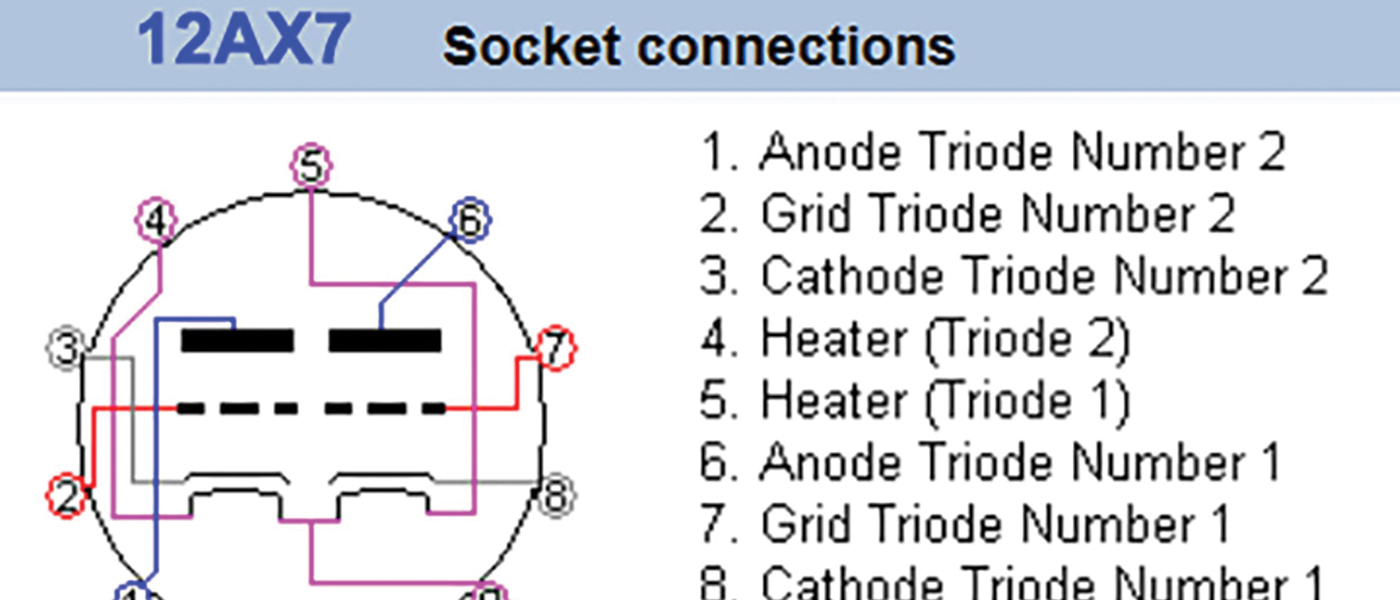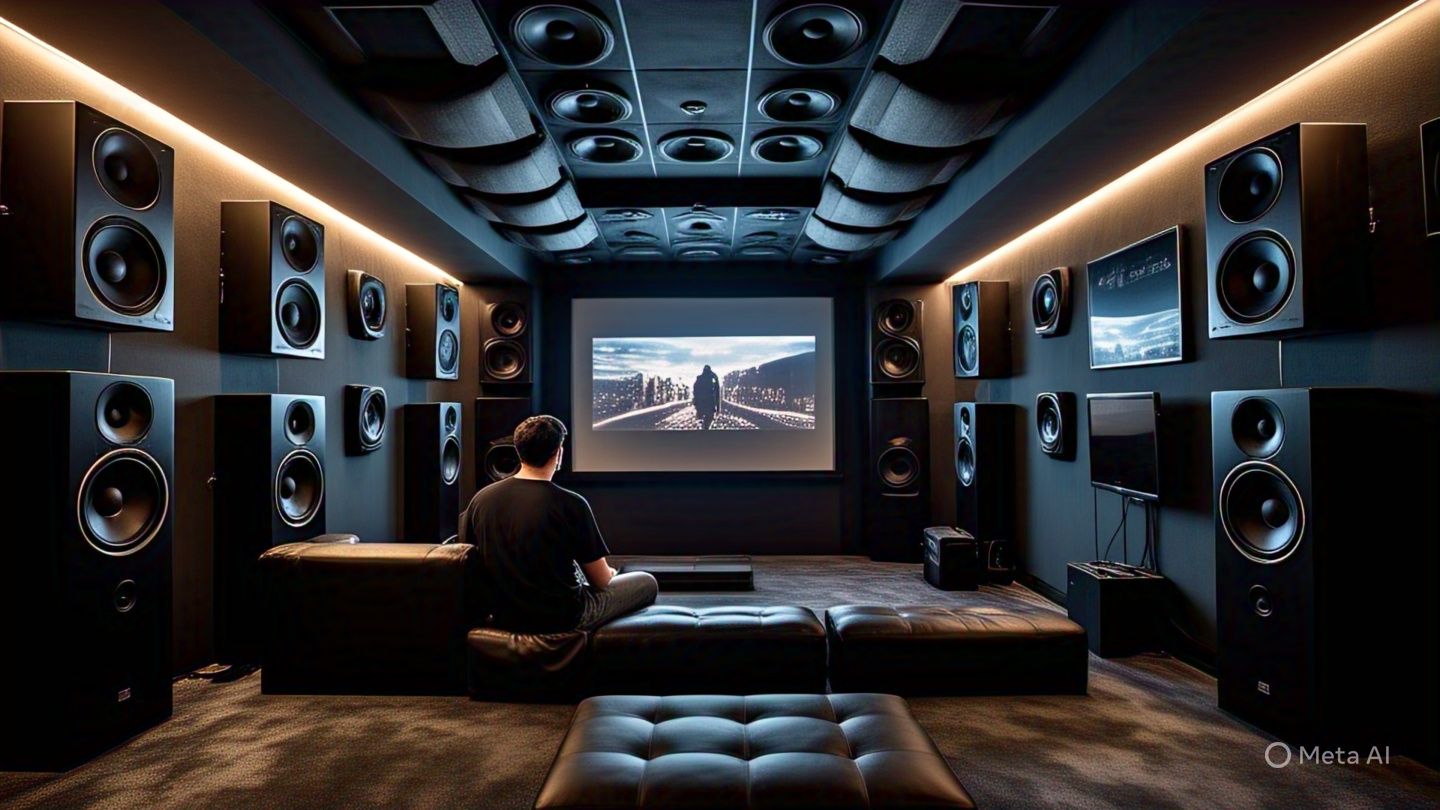In either case, they deliver surround sound that the 1930’s generation never even dreamed would exist in the future.
®Dolby Atmos and ®DTS:X represent the forefront of immersive audio technologies, offering listeners and viewers a three-dimensional sound experience that far surpasses traditional surround sound formats. Unlike older systems that assign audio to fixed channels (such as front left or rear right), both Atmos and DTS:X operate on object- based audio principles. This means each sound – be it a helicopter, a whisper, or a footstep—can be treated as an independent object and placed anywhere in a 3D sound field. The result is greater precision, spatial realism, and an expanded vertical dimension that enables overhead effects, making movie scenes and musical performances more enveloping and lifelike.
While the goals of ®Dolby Atmos and ®DTS:X are similar, their implementation and ecosystem support differ. Dolby Atmos, introduced in 2012, has gained broader adoption in both commercial cinemas and home entertainment, supported by streaming platforms like Netflix and Disney+, as well as Blu-ray releases and soundbars. DTS:X, launched in 2015 as a more flexible alternative, does not require a specific speaker layout, offering more freedom in setup and design. DTS:X is often praised for its open standards and compatibility with existing DTS-HD Master Audio speaker configurations. However, Dolby Atmos enjoys a head start in content availability and integration with devices. Understanding how these formats process and render audio is key to appreciating the engineering behind them – and can help consumers make informed decisions when choosing home theater equipment or evaluating the latest immersive audio experiences.
1. Encoding and Compression
- Dolby Atmos
- Uses Dolby TrueHD (lossless) or Dolby Digital Plus (lossy) for encoding.
- When using Dolby Digital Plus, the bit rate is typically up to 768 kbps for streaming and 1.5 Mbps for Blu-ray.
- With Dolby TrueHD, it can reach 18 Mbps on Blu-ray.
- Uses Joint Object Coding to reduce data redundancy and optimize spatial accuracy. (See NOTES for explanation of Joint Object Coding.)
- Encodes with DTS-HD Master Audio (lossless) or DTS Core (lossy).
- DTS-HD MA supports bit rates up to 24.5 Mbps on Blu-ray.
- Uses adaptive bitrate encoding to efficiently manage object-based audio.
2. Object Handling and Speaker Flexibility
- Dolby Atmos
- Supports up to 128 objects with metadata defining their placement in 3D space.
- Objects are assigned to up to 64 discrete speaker outputs in professional setups.
- Requires at least a 5.1.2 speaker layout for consumer applications.
- DTS:X
- Does not have a strict object limit but is generally used with up to 32 speaker outputs in consumer setups.
- Does not require a specific speaker layout and can adapt to different configurations.
- Uses Neural Mapping to position sounds dynamically. (See NOTES for explanation of Neural Mapping.)
3. Speaker Mapping and Processing
- Dolby Atmos
- Uses a fixed speaker layout approach with specific height and surround positions.
- Performs vector-based panning to map sound objects dynamically across speakers.
- Employs Dolby Surround Upmixer to convert non-Atmos content into Atmos.
- DTS:X
- Uses Adaptive Speaker Remapping to work with various speaker configurations.
- Employs DTS Neural:X Upmixer to enhance non-DTS:X audio.
- Generally provides more flexibility in speaker placement.
4. Bit Depth and Sampling Rate
- Both formats support up to 24-bit/96 kHz lossless audio, with some DTS:X tracks capable of 192 kHz in select applications.
5. Psychoacoustic and Loudness Processing
- Dolby Atmos applies loudness normalization and dialog normalization to maintain consistency across different playback systems.
- DTS: :X Allows for dialog level adjustment without affecting the rest of the mix.
Summary
| Feature | Dolby Atmos | DTS:X |
| Encoding | Dolby TrueHD, Dolby Digital Plus | DTS-HD Master Audio, DTS Core |
| Max Bit Rate | 18 Mbps (TrueHD), 1.5 Mbps (DD+) | 24.5 Mbps |
| Object Limit | 128 objects | No strict limit |
| Speaker Mapping | Fixed layout (e.g., 5.1.2, 7.1.4) | Flexible mapping |
| Speaker Outputs | Up to 64 (pro setup) | Up to 32 |
| Upmixing | Dolby Surround Upmixer | DTS Neural:X |
While Dolby Atmos offers highly structured speaker placement and efficient encoding, DTS:X provides more flexibility with speaker configuration and potentially higher bit rates.
Secrets Sponsor
NOTES:
DTS:X Neural Mapping is a spatial audio processing technique used in the DTS:X ecosystem to dynamically adapt object-based audio to different speaker configurations. It is part of DTS:X’s Adaptive Speaker Remapping system, allowing sound objects to be positioned accurately even when a user’s speaker setup does not match the reference layout.
How DTS:X Neural Mapping Works
- Speaker Configuration Analysis
- DTS:X detects the number, type, and physical arrangement of available speakers.
- Unlike Dolby Atmos, which requires specific height and surround placements, DTS:X can work with arbitrary speaker layouts.
- Object-Based Processing
- Instead of relying on fixed channels, DTS:X Neural Mapping processes audio objects with metadata describing their intended position in a 3D space.
- Each object has position vectors, which help determine its placement within the listener’s speaker setup.
- Adaptive Remapping Algorithm
- If a speaker is missing or positioned differently than the reference layout, Neural Mapping redistributes the sound intelligently to nearby speakers.
- The system uses vector-based panning and psychoacoustic modeling to preserve the spatial intent of the mix.
- Height Virtualization (if necessary)
- If height speakers are missing, DTS:X can use HRTF (Head-Related Transfer Function) filters to simulate overhead effects via ear-level speakers.
- This is similar to Dolby Atmos’ Virtual Height Processing but is generally more flexible.
Key Differences from Dolby Atmos Speaker Processing
| Feature | DTS:X Neural Mapping | Dolby Atmos |
| Speaker Layout | Fully adaptable | Fixed reference layouts (e.g., 5.1.2, 7.1.4) |
| Object Handling | Dynamically repositioned | Uses predefined speaker zones |
| Height Speaker Requirement | Optional | Required for full effect |
| Virtualization | Uses HRTF for missing height channels | Uses Dolby Height Virtualization |
| Upmixing Compatibility | DTS Neural:X can enhance non-DTS:X content | Dolby Surround Upmixer |
Benefits of DTS:X Neural Mapping
- More flexible speaker placement (ideal for non-standard room setups).
- Better adaptability to different home theater configurations compared to Dolby Atmos.
- No need for dedicated height speakers, making immersive sound accessible to more users.
- Improved localization of sound objects even with missing speakers.
This makes DTS:X Neural Mapping particularly useful for custom home theater installations where the standard Dolby Atmos speaker layouts (like 5.1.2 or 7.1.4) are not feasible.
Dolby Atmos Joint Object Coding (JOC) is a lossy audio compression technique used by Dolby Atmos when delivered via Dolby Digital Plus (DD+). It efficiently encodes object-based audio into a more bandwidth-friendly format for streaming and broadcasting while maintaining spatial accuracy.
Why Joint Object Coding?
- Dolby Atmos supports up to 128 audio objects, but transmitting all objects separately requires high bandwidth.
- Streaming services and Dolby Digital Plus (DD+) have limited bitrates (typically 384–768 kbps for streaming and up to 1.5 Mbps for Blu-ray).
- JOC groups objects into “joint-coded” signals to reduce data size while preserving spatial resolution.
How Dolby Atmos JOC Works
- Object Clustering & Joint Coding
- Instead of encoding each object independently, JOC groups related objects based on their spatial positioning and frequency content.
- It applies perceptual coding techniques similar to those used in AAC (Advanced Audio Coding).
- Channel Bed Encoding
- The clustered objects are mixed into a channel-based audio bed (typically 5.1 or 7.1 channels).
- Object metadata is encoded separately to allow for spatial reconstruction during playback.
- Playback Reconstruction
- On Dolby Atmos-compatible devices, the encoded objects are extracted and repositioned in real time using the metadata.
- If a device does not support Atmos, it falls back to standard 5.1 or 7.1 playback.
Comparison: JOC vs. Lossless Dolby Atmos (TrueHD)
| Feature | Dolby Atmos JOC (DD+) | Dolby Atmos TrueHD |
| Compression Type | Lossy | Lossless |
| Bitrate | 384–768 kbps (Streaming), up to 1.5 Mbps (Blu-ray) | Up to 18 Mbps |
| Max Speaker Channels | 7.1 + object metadata | Up to 64 discrete channels |
| Best Use Case | Streaming, broadcast | Blu-ray, high-end home theaters |
| Object Handling | Joint-coded objects, reconstructed at playback | Fully independent objects |
Advantages of Joint Object Coding
- Enables Dolby Atmos on low-bitrate networks (e.g., Netflix, Disney+)
- Efficient bandwidth use while maintaining object-based positioning
- Backwards compatible with 5.1/7.1 systems
Limitations
- Lower spatial precision compared to TrueHD Atmos
- Reduced object separation due to joint coding
- Not fully lossless
JOC allows Dolby Atmos to be streamed efficiently without requiring massive bandwidth, but for the highest fidelity, Dolby TrueHD (lossless Atmos) remains the best option.
Secrets Sponsor
Dolby Atmos is Coming to Your Home Theater Soon.
®Dolby Atmos is beginning to make a strong entrance into music albums, offering a massive, immersive soundstage that goes far beyond traditional stereo. As more artists and streaming platforms embrace this format, it’s clear that Atmos has a big future in high-fidelity music. For audiophiles, this means expanding our systems beyond high-end two-channel setups. Embracing home theater configurations with seven or more channels may soon become essential for experiencing both cinematic and high-end musical recordings at their fullest potential.

Schola Cantorum, Tone Bianca Sparre Dahl, “Hymn to the Virgin”
2L of Norway (https://www.2l.no/) has a lot of multi-channel music albums, both in Dolby Atmos and also in DTS. They started doing this years ago, and my favorite album of theirs is Hymn to the Virgin, with music composed by Benjamin Britten, Francis Poulenc, Maurice Duruflé, Eric Whitacre, Morten Lauridsen, Martin Ødegaard, Kjell Mørk Karlsen, Anton Bruckner, Sergei Rachmaninoff, Arvo Pärt, Ola Gjeilo, Andrew Smith and Trond Kverno. The album was nominated for a GRAMMY at the 56th Awards. It has DTS 5.0 multi-channel sound. Once you hear native multi-channel music, you will be hooked. There are also some albums in 7-channel surround.
As of 2025, several new audio formats have emerged, supporting 4-channel (quadraphonic) audio and beyond, aiming to enhance immersive listening experiences. Here’s an overview of the most notable developments:
1. Dolby AC-4
Dolby AC-4 is a next-generation audio format designed to deliver high-quality sound across various platforms, including broadcast, streaming, and mobile. It supports traditional channel-based audio as well as object-based audio, allowing for flexible rendering to different speaker configurations, including 4-channel setups. AC-4 offers improved compression efficiency, delivering equivalent audio quality at approximately half the bitrate of its predecessor, Dolby Digital Plus.
2. MPEG-H 3D Audio
Developed by the ISO/IEC Moving Picture Experts Group, MPEG-H 3D Audio is a versatile audio coding standard that supports channel-based, object-based, and Higher Order Ambisonics (HOA) audio. It can accommodate up to 64 loudspeaker channels and 128 codec core channels. MPEG-H enables interactive and personalized audio experiences, allowing listeners to adjust elements like dialogue levels and language selection. It’s already in use in countries like South Korea and Brazil for UHD TV broadcasts.
3. Eclipsa Audio (IAMF)
Introduced in 2025 by Google and Samsung, Eclipsa Audio is an open-source spatial audio format based on the Immersive Audio Model and Formats (IAMF) standard. Designed as a royalty-free alternative to proprietary formats like Dolby Atmos, Eclipsa Audio supports immersive audio experiences, including 4-channel configurations. It allows for precise control over sound location, intensity, and spatial reflections. Samsung’s 2025 TVs and soundbars are among the first devices to support this format.
4. Sony 360 Reality Audio
Sony’s 360 Reality Audio is an immersive music experience that uses object-based spatial audio technology to position individual sound elements in a 360-degree sound field. While not limited to 4-channel audio, it can be rendered on various speaker setups, including quadraphonic configurations. This format is primarily used for music streaming services and is based on the MPEG-H 3D Audio standard.
5. Universal Audio Volt 4 and Volt 476P
For creators and producers, Universal Audio has expanded its Volt series with the Volt 4 and Volt 476P, both 4-channel USB-C audio interfaces. These devices offer high-resolution audio conversion (24-bit/192 kHz) and feature switchable vintage mic preamp modes, providing flexibility for recording and mixing in quadraphonic and other multi-channel formats.
These emerging formats and tools signify a growing trend towards more immersive and customizable audio experiences, with support for 4-channel configurations becoming increasingly accessible across various platforms and devices.
As ®Dolby Atmos and ®DTS:X continue to shape the landscape of cinematic audio, their influence is now extending into the world of surround sound music. For film, both formats offer breathtaking realism and dimensionality, allowing sound designers to create more immersive environments than ever before. Dolby Atmos has led the charge with broader adoption across theaters, streaming services, and home audio systems. Its fixed metadata and channel-based plus object-based approach allow precise control over spatial placement. DTS:X, by contrast, takes a more flexible path with its open architecture and speaker layout independence, which can be more forgiving in varied home setups. Both formats succeed in elevating film audio beyond conventional surround, though Dolby’s momentum in content availability has given it an edge in consumer accessibility.
The entrance of Dolby Atmos and DTS:X into the music space represents a new frontier in immersive listening. Early Atmos music releases from platforms like Apple Music and Tidal are drawing attention, showcasing how songs can envelop the listener with height and space, not just left-to-right stereo imaging. DTS:X Music, while still emerging, offers similar potential with its adaptable rendering. However, adoption remains limited, and production workflows are still evolving. As the music industry explores these formats, listener education and high-quality mixing will be essential to their success. Ultimately, both technologies are pushing the boundaries of audio realism – and as content expands, listeners can expect a richer, more spatially engaging experience whether they’re watching a blockbuster or listening to their favorite album.
REFERENCES
Dolby Laboratories Official Website, https://www.dolby.com/
Dolby Atmos Technical Whitepaper, “Dolby Atmos for the Home” (PDF)
Dolby Developer Portal, https://developer.dolby.com/
AES (Audio Engineering Society) Papers, https://www.aes.org/
SMPTE (Society of Motion Picture and Television Engineers) Papers, https://www.smpte.org/
“Immersive Sound: The Art and Science of Binaural and Multi-Channel Audio” – by Agnieszka Roginska & Paul Geluso
“Principles of Digital Audio” – by Ken C. Pohlmann
AVSForum Dolby Atmos Discussions, https://www.avsforum.com/
Dolby Atmos Encoding Guidelines (Blu-ray, Streaming, Gaming)
Dolby Laboratories’ Official Explanation of Dolby Digital Plus JOC, professionalsupport.dolby.com
Dolby AC-4: Audio Delivery for Next-Generation Entertainment Services, professional.dolby.com
Immersive Audio Delivery Using Joint Object Coding, secure.aes.org
Efficient Delivery of Immersive Experiences with Joint Object Coding (JOC), sigport.org
Spatial Coding with Dolby Atmos, YouTube
DTS:X Official Overview, https://dts.com/dts-x/
“Welcome to DTS:X – Open, Immersive, and Flexible Object-Based Audio Coming to Cinema and Home”, https://dts.com/insights/welcome-to-dtsx-open-immersive-and-flexible-object-based-audio-coming-to-cinema-and-home/
“What is the Difference Between DTS:X and DTS:X Pro?”, https://www.trinnov.com/en/blog/posts/what-is-the-difference-between-dts-x-and-dts-x-pro/
“Understanding DTS:X and Dolby Atmos Audio Formats”, https://www.sony.ie/electronics/support/articles/00155680
“DTS:X: The Immersive Audio Alternative to Dolby Atmos, Explained”, https://www.cnet.com/tech/home-entertainment/dts-x-the-dolby-atmos-alternative-explained/
AES Engineering Brief: “Investigation of Interchangeability Among 3D Sound Rendering Systems”, https://secure.aes.org/forum/pubs/ebriefs/?elib=18693
DTS:X Immersive Audio Solution by GDC Technology, https://www.gdc-tech.com/cinema-solutions/cinema-audio/dts-x-immersive-audio-solution/



